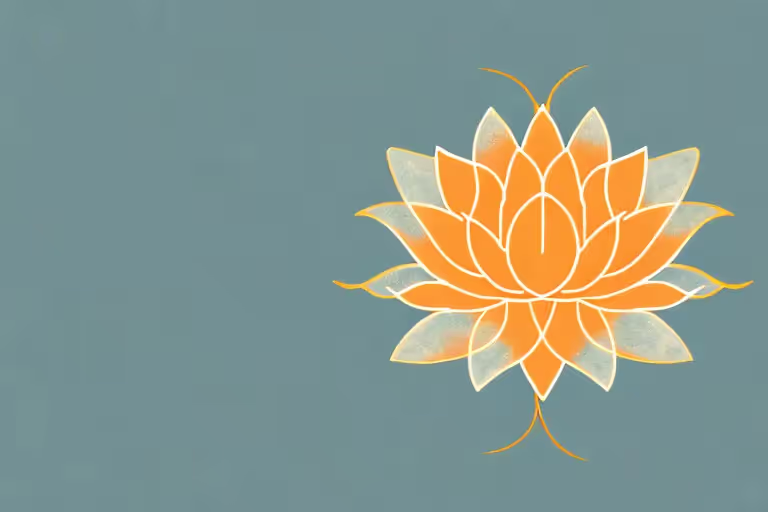What does it take to stay centered throughout your work day? How do we adapt to changing workplace dynamics or changes in our roles as a result of new technology or economic shifts? These aren't easy or light questions. When truly adapting to change, it can sometimes seem condescending to hear something like "You just have to be more mindful." Meanwhile, I'm here to tell you that a small dose of mindfulness goes a long way.
Understanding the basics of mindfulness and applying mindfulness techniques to stay centered is one of the most important things you can do to enhance your quality of life — especially throughout a busy work day. The importance of maintaining mindfulness in the workplace is especially important when there is a lot of change going on around you. And even during times when things are good, it can be an opportunity to deepen working relationships and share the benefits of mindfulness with your co-workers. It benefits everyone when we collectively take a pause and think more deeply about the impact of our words and our efforts.
Understanding the Role of Breaks at Work
Is taking a break the same thing as mindfulness? Sometimes. Because mindfulness is the act of getting present and treating self and others with compassion, a short break from constant work can be an opportunity to get centered. Ongoing stressors without breaks can lead to accelerated aging, according to Dr. Elizabeth Blackburn and Dr. Elissa Eppel, authors of the Telomere Effect, our brain health can be enhanced by relaxation, meditation, and stress-reduction techniques — and that can be as simple as taking a break.
In the short time it takes to breathe in and out a few times or pause the endless to-do list, you can enhance your mindfulness and ability to respond to whatever comes next in your day. This is true on the job, but it's also true at home, where there may be stressors keeping us working nonstop or distracted. Simple mindfulness techniques can make a huge difference in our ability to stay centered and grounded throughout the day.
If you're in back-to-back meetings throughout your day, then pausing to take a mindfulness break might seem like a stretch of the imagination. It's helpful to schedule mindfulness breaks ahead of time, so you don't get swept away into mindlessly checking things off a to do list. Put at least two 5 minute blocks on your calendar a week to see if that helps you build in time to practice being present. Reflect on how that impacted your work day. Do you feel more centered and balanced at the end of those days? Do you find that you're able to complete tasks more effectively and respond to your coworkers in a way that you think better represents your authentic self?
Scientific Support for Mindfulness Techniques
Don't just trust us with the importance of mindfulness. There is plenty of data to support how a deep mindfulness practice can benefit your health and your performance in the workplace. The University of Nottingham recently published a study that shows the dark side of burnout includes impacts from increased stress including work overload, anxiety, fear of missing out, and addiction. Fortunately, mindfulness practices can counter these effects. Distractions are minimized when we are living in the moment. It helps our brain to optimally function.
Mindfulness can also lead to more rational decision-making at work. According to one study that compared people who do not meditate with those who meditated 15 minutes daily revealed that the meditators felt reduced worry over past events or losses, such as sunk costs. This ultimately leads to making more objective and less emotionally driven choices. Imagine trying to let go of a project that you sunk too much time into with your team. What would happen if you used mindfulness to let that project go? What does that make space for you and your team to pursue now that you aren't focusing on a project that made you all feel like you were hitting your head against the wall?
Applying Mindfulness Techniques to Stay Centered
The first key to being centered at work is to identify what triggers you. Are there certain times of the day when you feel more stress? If so, see if you can start by noticing and recording when you feel most stress at work. Once you have a record of when those moments or times in the day happen, then you can start to build practices to prevent and work through them.
The best way to start facing those stressful moments at work head on is with mindfulness techniques. The simplest mindfulness exercises that can be done at work include breathing exercises, mindful listening, mindful walks, or mindful meditations, and simply closing your eyes and silently counting or focusing on a particular object. The point is, you just need a short time to slow down and release the constant pressure that comes from needing to constantly do. Building a routine around mindfulness is the first step, and this means overcoming practical obstacles.
If breathing exercises, mindful listening, mindful walks, or mindful meditations feel like a hard place to start then you can try something like a short puzzle or a mindfulness desk toy to bring you into the present moment.
Building a Routine Around Mindfulness
Integrating mindfulness into the work schedule can look many different ways and finding different techniques that work for various triggers will help you stay present. Here are a few that we love to practice throughout our day:
- Create a designated spot for mindfulness practice on the job or in your car
- Make your practice routine by inviting a co-worker to join a daily meditation or mindfulness challenge with you
- Block your calendar for a time that makes sense and treat your meditation practice as a meeting
- Find inspiration by looking at mindful leaders in your industry
- Look for wellness resources at your workplace
- Take note of times when you are multitasking and make space to close your eyes a few times a day and try mindful breathing
A Few Mindfulness Meditation Practices
Once you have a sense of routine around your mindfulness practice, create a short list of different techniques that you can use and visual triggers that will help you remember to stay present, including:
- Dropping into the body: Close your eyes and focus on releasing thoughts and dropping consciousness down into the body. Notice the inhale, notice the body expanding, and notice the gentle contraction on the exhale. Continue for 10-20 rounds of breath.
- Sensation meditation: Begin again by finding a comfortable space and with eyes closed or open, begin to notice what you hear. See if you can expand your hearing more, to hear the more subtle sounds happening around you. Now expand this attention even more, aiming to hear the sounds even farther away than that. This is a subtle practice that urges your mind to expand perspective.
- Mudra meditation: With eyes closed or open, press the thumb pads to the pads of your index fingers gently, then your middle finger, ring finger, and pinky finger. Continue with both hands and focus on the subtle movement. Aim for 10 full rounds.
- Mindfully journal for a few minutes, releasing all thoughts or worries onto the page with compassion. Let the page carry your emotions, and when you are done, simply tear the paper up or ball it up and throw it away. This opportunity to consciously and compassionately explore your thoughts will allow you to release what is weighing heavy on your mind.
Overcoming Obstacles in Maintaining Mindfulness
For some of us, building a meditation practice into your work day might be as easy as shutting an office door and blocking the calendar for 15 minutes. For others, that can feel impossible. Perhaps there's no door and no time. We know that not all working environments make self-care easy.
Luckily, we're firm believers that you don't need an hour to build in a centering practice. It can take a few minutes or even a few breaths to come into the present moment. For some who have heard this ad nauseam, it's easy to be skeptical or resistant to such a simple idea. If this is the case for you, it's an interesting self-study practice to try a few of these techniques and record any shifts in mood, focus, and health day-to-day. If you don't find results with things like mindfulness breathing because it doesn't slow your thoughts down, then try something that engages other senses or parts of the body to shift your attention away from the thoughts that burden you in the workplace.
If your office environment is not conducive to daily meditations at work, you can always focus on taking a few mindful breaths just before you go into a meeting. You can also try to build in a mindful walk after lunch. Adapting your relaxation technique to one that makes sense will help you reduce stress quicker.
The Importance of Maintaining Mindfulness in the Workplace
Mindfulness at work leads to enhancing productivity and performance, managing stress, improving at-work motivation and job satisfaction, and taking care of your health. Developing a more harmonious and engaged work environment means ensuring you feel you're in control of that environment and not at its mercy. To find your mindful routine might reveal an entirely new perspective at work.
At Aura, 97% of people find more calmness in just three days, which speaks to the power of meditation and mindful practices. If you’re looking for more guidance, community support, and resources to support anxious thoughts, join me at Aura, the most holistic meditation app on the market, for 30 days free.



.webp)







.avif)

%20(1).avif)


.avif)
.avif)
.webp)


.avif)


















































































































.avif)

















.svg)









